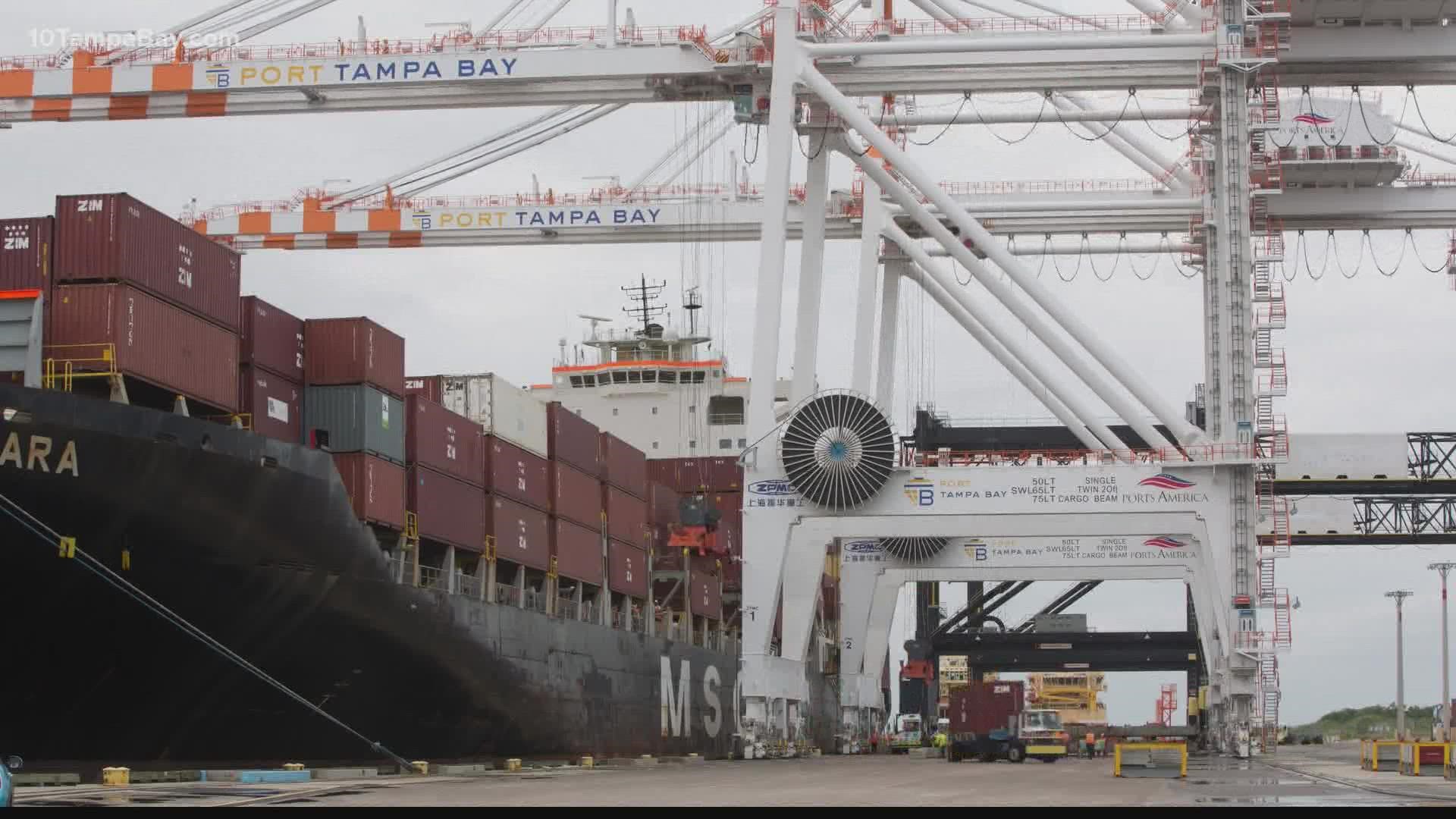By now, you've likely noticed that a lot of your go-to products at the store are slapped with higher price tags or replaced by empty shelves.
From cars and construction supplies to mom-and-pop shops and even our kids' school lunches, worldwide shortages are being felt right here in the Tampa Bay area.
You may have heard that it has to do with a broken supply chain.
But how exactly did it break?
Victor Claar, an economist at Florida Gulf Coast University, explained that "the pandemic in many ways created a perfect storm."
Early on in the pandemic, factories responsible for much of the world's manufacturing were hit hard by the spread of COVID-19. A lot of facilities were forced to slow production or shut down altogether due to workers getting sick or having to stay home due to pandemic-related stay-at-home orders.
In response, the New York Times reports, shipping companies reduced their schedules in anticipation of an overall slowdown in moving goods around the world due to businesses being shut down.
While some industries, like restaurants and travel, did see a decrease in demand, other industries saw a surge in demand as Americans used the money they would've spent on experiences toward projects in their homes.
There was an increased demand for things like exercise equipment, technology, and appliances as people converted their homes into gyms, classrooms, home offices and restaurants.
This surge in demand essentially clogged our systems for transporting, as production facilities couldn't get all the materials they needed to create enough of the products they export.
Plus, as Claar says, shipping containers were getting stuck, sometimes for months in places they shouldn't have been.
As the New York Times explains, China shipped mass amounts of medical gear and protective equipment like masks all over the world at the start of the pandemic. And a lot of those shipping containers ended up in countries that don't typically send much product back to China. So, empty containers piled up.
Because shipping containers were scarce, the cost of shipping skyrocketed.
"What used to cost maybe about $6,000 to ship from one of the ports in China to the West Coast ports, now it costs about $30,000," Claar said.
He described it all as a ripple effect.
"When you think about the supply chain, realize it is just that, a chain. There’s one link, that connects to another link, that connects to another. Now we have multiple issues affecting multiple links in that chain. It drives up costs in one of those links and those costs are passed along where there are higher costs," Claar explained.

